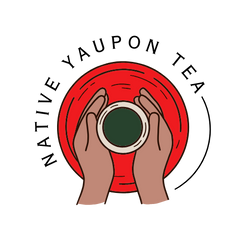The Ceremony of Fire: How Cultural Burning Sustains Yaupon and Its Plant Relatives
Fire Is Not the Enemy. It Is a Teacher.
In the Southeastern Woodlands, fire has always been part of the land’s rhythm. Longleaf pine savannas, coastal plains, and inland sandhills developed alongside regular, low-intensity burns. These fires were not destructive. They were intentional. They were relational. They were guided by Indigenous peoples who understood fire as a tool for balance.
Yaupon holly is one of the plants shaped by that relationship. It survives fire. It grows back stronger after fire. In many places, it depends on fire to maintain the open, sunlit understories it calls home.
Cultural Burning vs. Wildfire
There is a significant difference between cultural burning and the destructive wildfires we see today.
Cultural burning
• Low flame height
• Purposefully timed
• Conducted during wet periods or cooler seasons
• Protects animal habitat
• Encourages tender new plant growth
• Reduces excess fuel and prevents catastrophic fires
Wildfire
• Fueled by years of suppression
• Often hotter and more destructive
• Can damage soil structure
• Driven by drought, extreme heat, and wind
• Harder for ecosystems to recover from
Modern wildfire crises are in part the result of removing Indigenous peoples from their land and outlawing their burning practices. Without low, regular fires, the land accumulates debris and becomes volatile.
Fire Makes Space for Yaupon and Its Kin
Yaupon does not grow alone. It is part of a larger plant community shaped by the same pattern of light, fire, water, and soil.
Regular burning supports Yaupon and its relatives by:
• Opening the understory so sunlight reaches young plants
• Preventing invasive species from taking over
• Returning nutrients to the soil in a slow, gentle way
• Encouraging new shoots that wildlife depend on
• Maintaining the structure of longleaf pine ecosystems
After a burn, Yaupon responds with bright, vigorous growth. Its leaves thicken. Its berries shine. Birds, insects, and small mammals return to forage and shelter.
Fire keeps the community alive.
Plants That Grow Beside Fire
Yaupon’s closest companions share the same fire-adapted resilience.
• Longleaf pine sends deep roots and depends on fire to open space for seedlings.
• Wax myrtle resprouts quickly from its base after a burn.
• Red bay withstands heat and grows well in newly opened light.
• Switchcane emerges rapidly after fire, creating habitat for birds and small mammals.
• Sweetgrass thrives where cultural burns are practiced, producing long, strong leaves.
These plants have lived together for centuries. They form a web of support that fire helps maintain.
Fire as Relationship, Not Destruction
Indigenous peoples did not see fire as something to control. They saw it as something to work with. Cultural burning was timed by season, humidity, plant readiness, and community need. Fire cleared space for medicines, supported game animals, reduced pests, and protected villages from dangerous wildfires.
Fire was a ceremony.
Fire was knowledge passed through generations.
Fire was a way of tending kin.
Why Fire Ecologies Matter Today
Climate change has intensified droughts, storms, and wildfire risks across the South. Many ecosystems cannot recover the way they once did because the generations of cultural burning that shaped them have been interrupted.
Reintroducing cultural fire practices supports:
• Reduced wildfire risk
• Stronger native plant communities
• Improved soil health
• Increased biodiversity
• Healthier watersheds
• Better habitat for pollinators and wildlife
Fire, used wisely, helps the land withstand climate stress.
Yaupon Carries the Memory of Fire
When you see Yaupon in the wild, you are seeing a plant shaped by centuries of fire and human relationships. Its presence tells the story of Indigenous land care. It reminds us that ecosystems thrive when people know how to tend them.
Reviving Yaupon as a cultural plant also means reviving the ecological knowledge that kept its home landscapes healthy. Fire is part of that memory.

